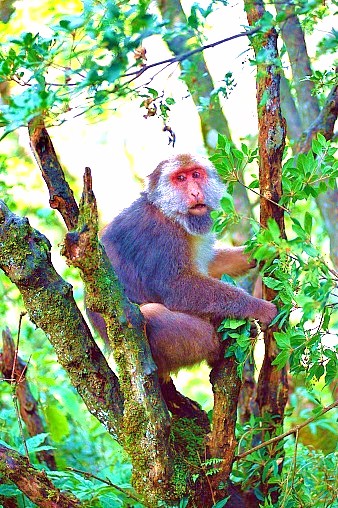The Tibetan macaque is a large primate with a short, stump-like tail, a diagnostic feature of the species. The fur is brown on the back and creamy-buff to grey on the underparts, with a prominent, pale-buff beard and full-cheek whiskers framing the hairless face. The bare facial skin is pale pink in males, and a more vivid, reddish-pink in females, particularly around the eyes. A long, thick, dense coat helps this species to cope with the cold environment at the high altitudes at which it is found. As with other macaques, cheek pouches are used to carry food whilst foraging. Infants have silver and black fur, which darkens with maturation, although the final colour can vary between anything from a pale, yellowish brown to a dark, brownish-black. |

